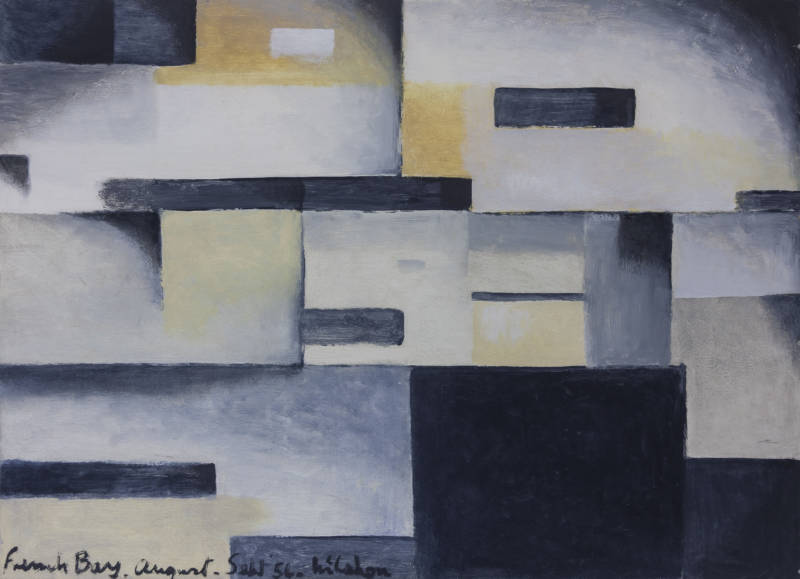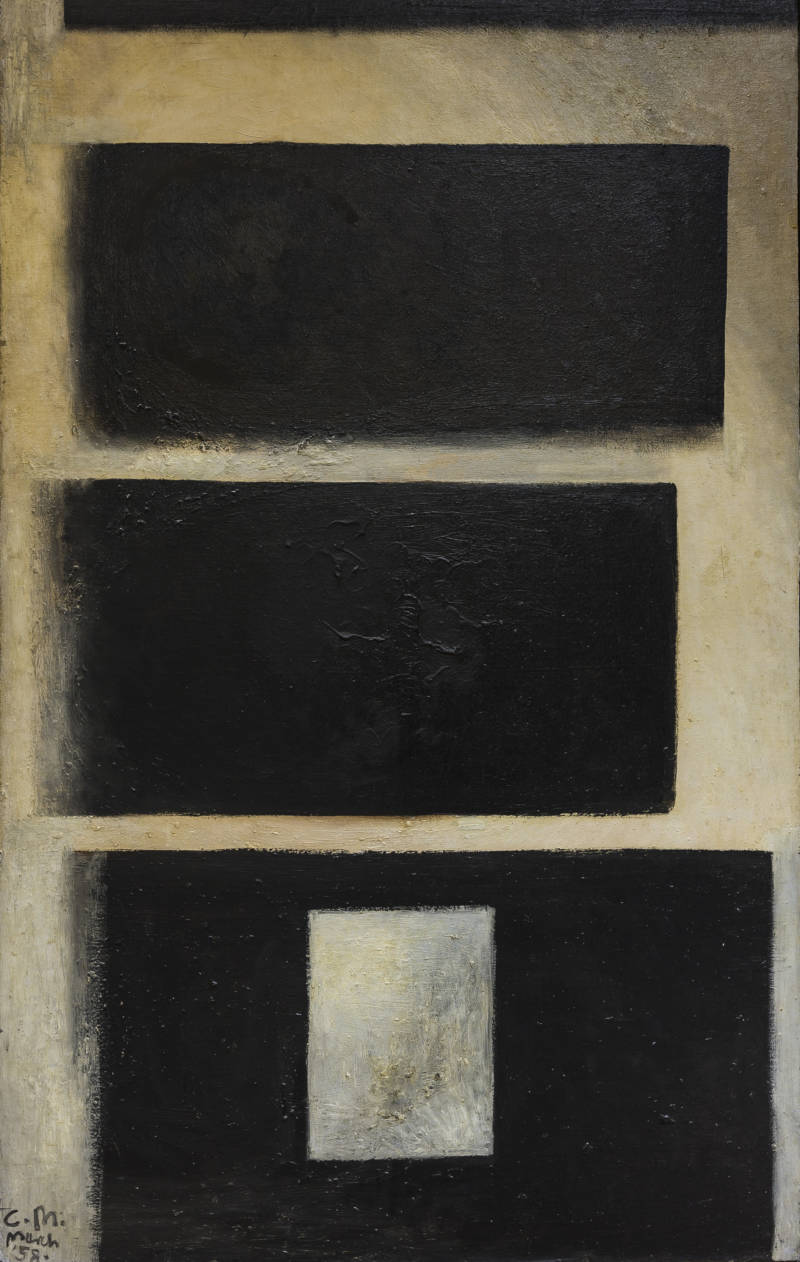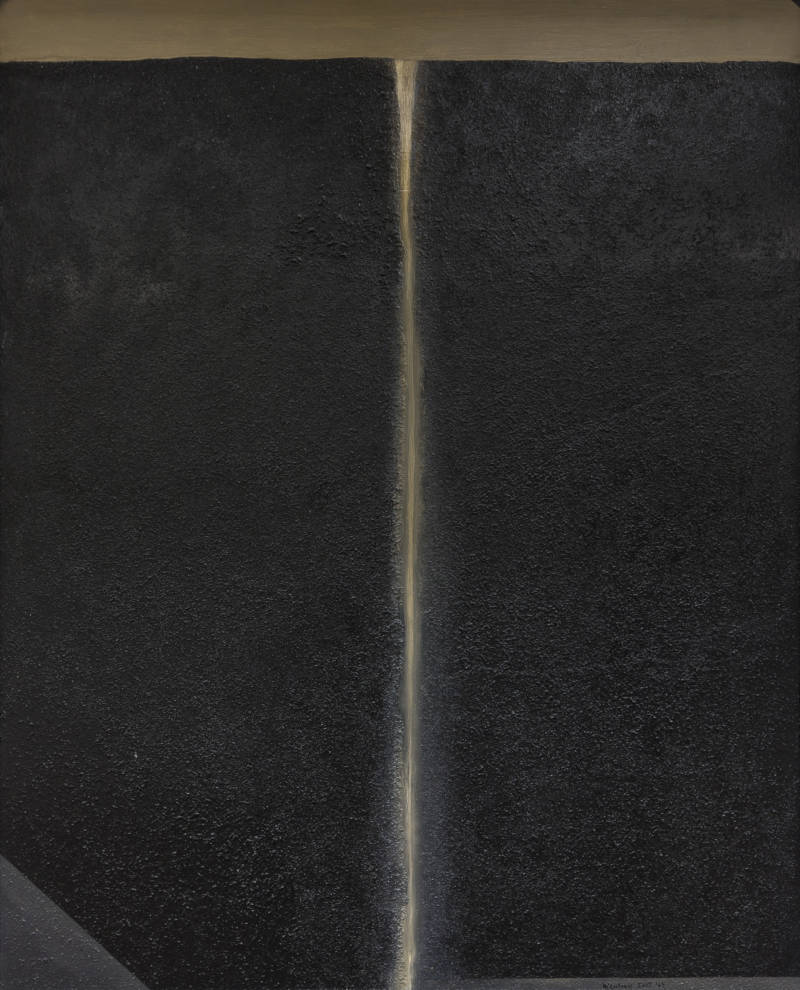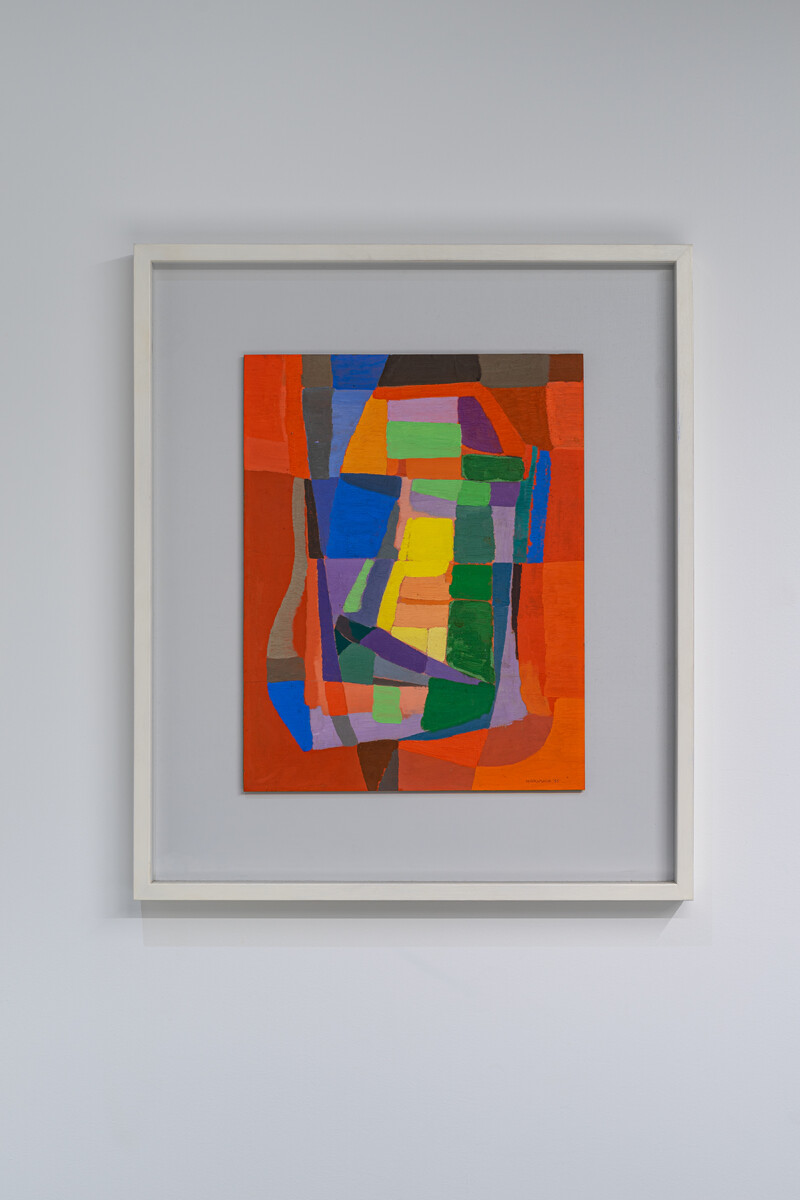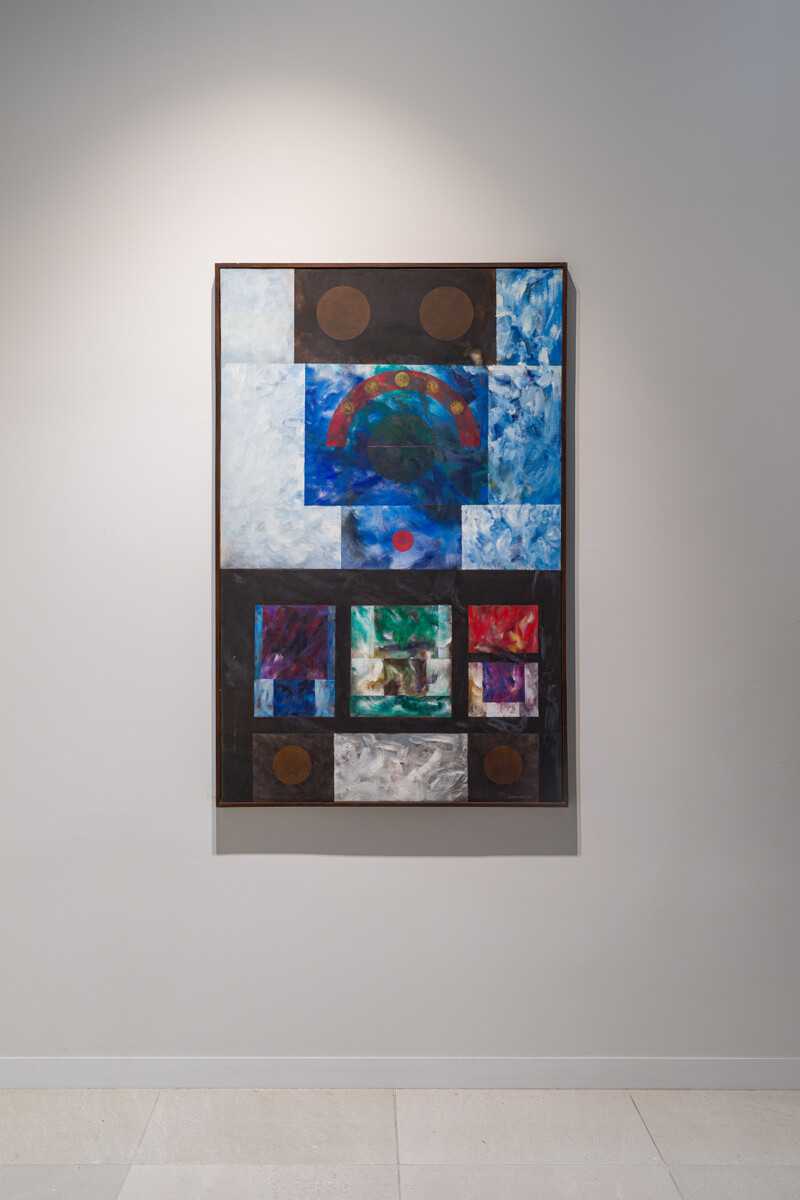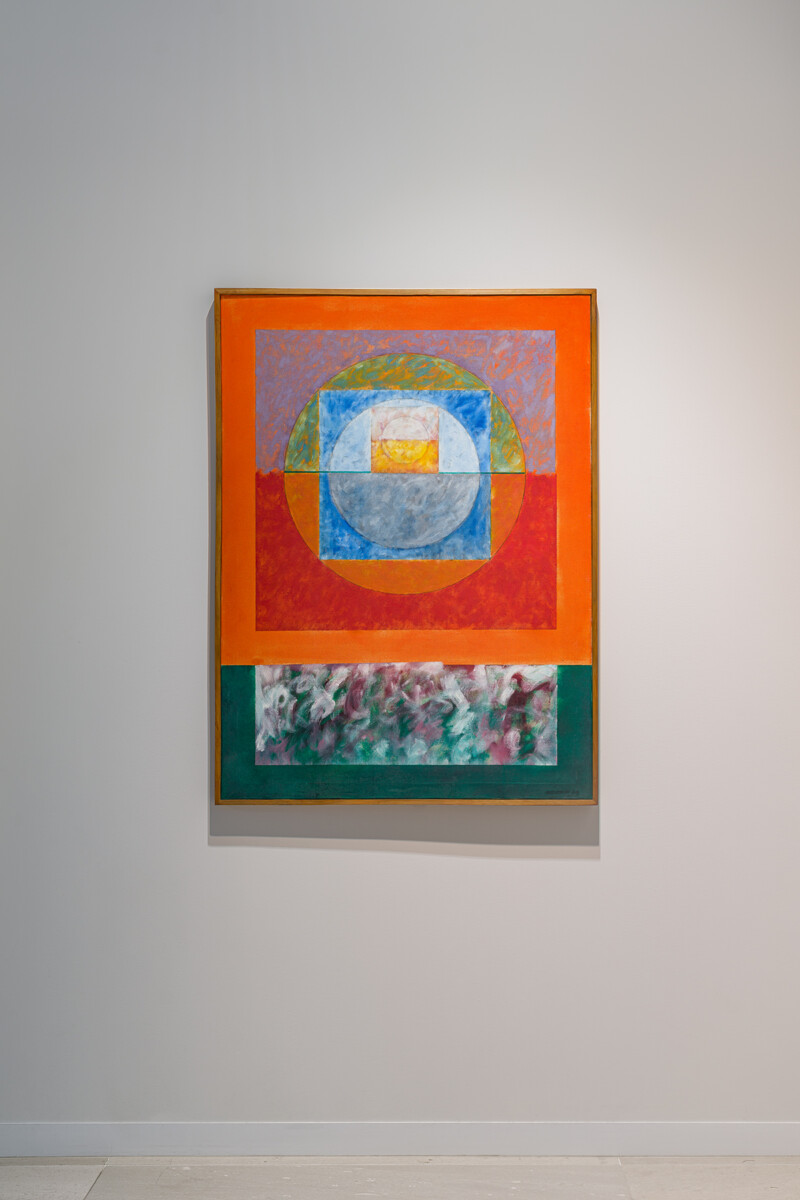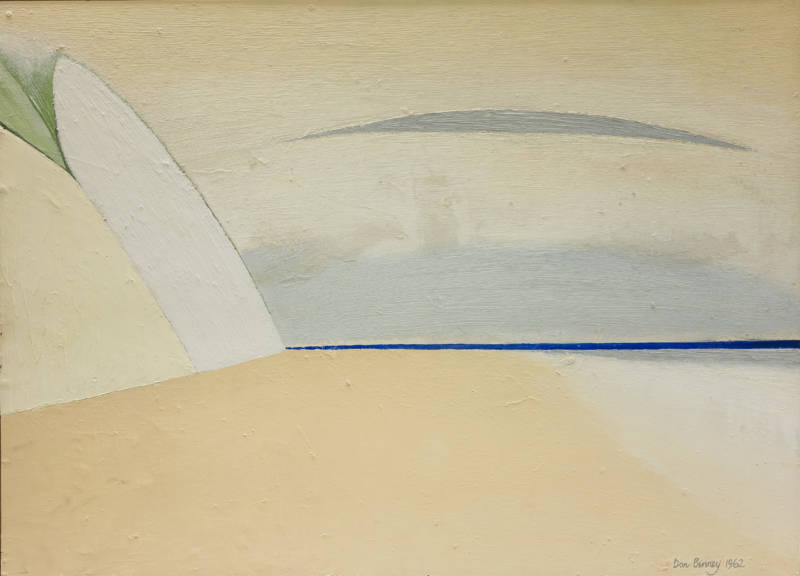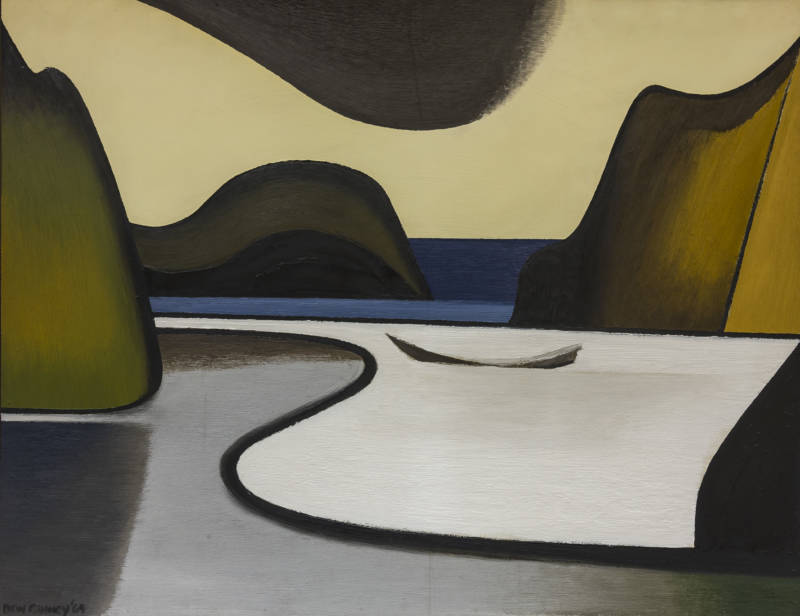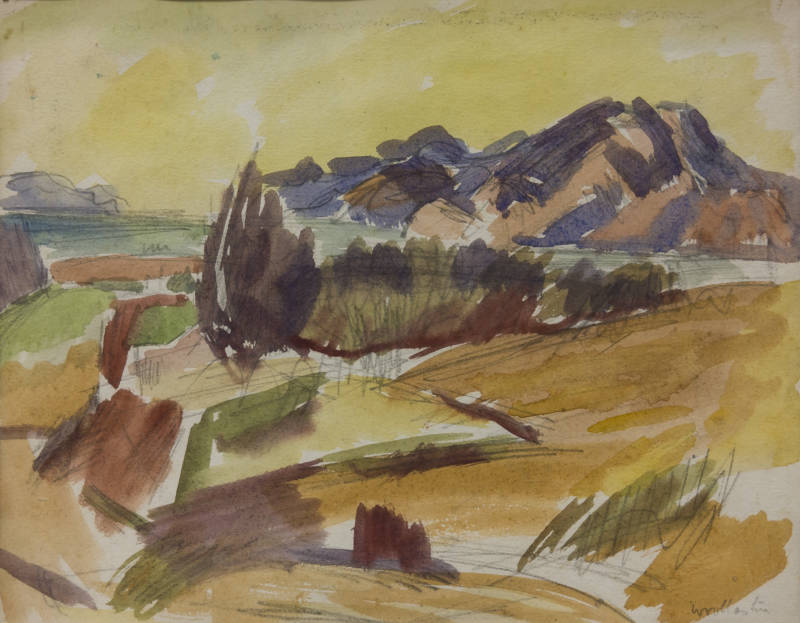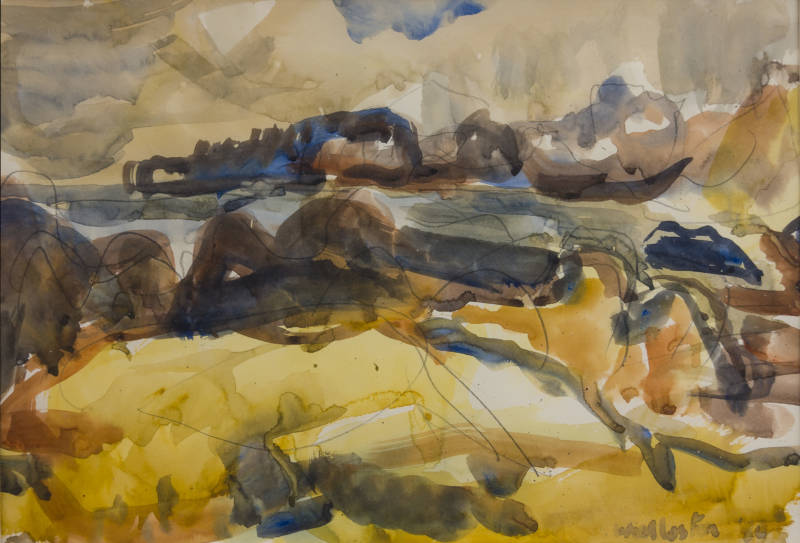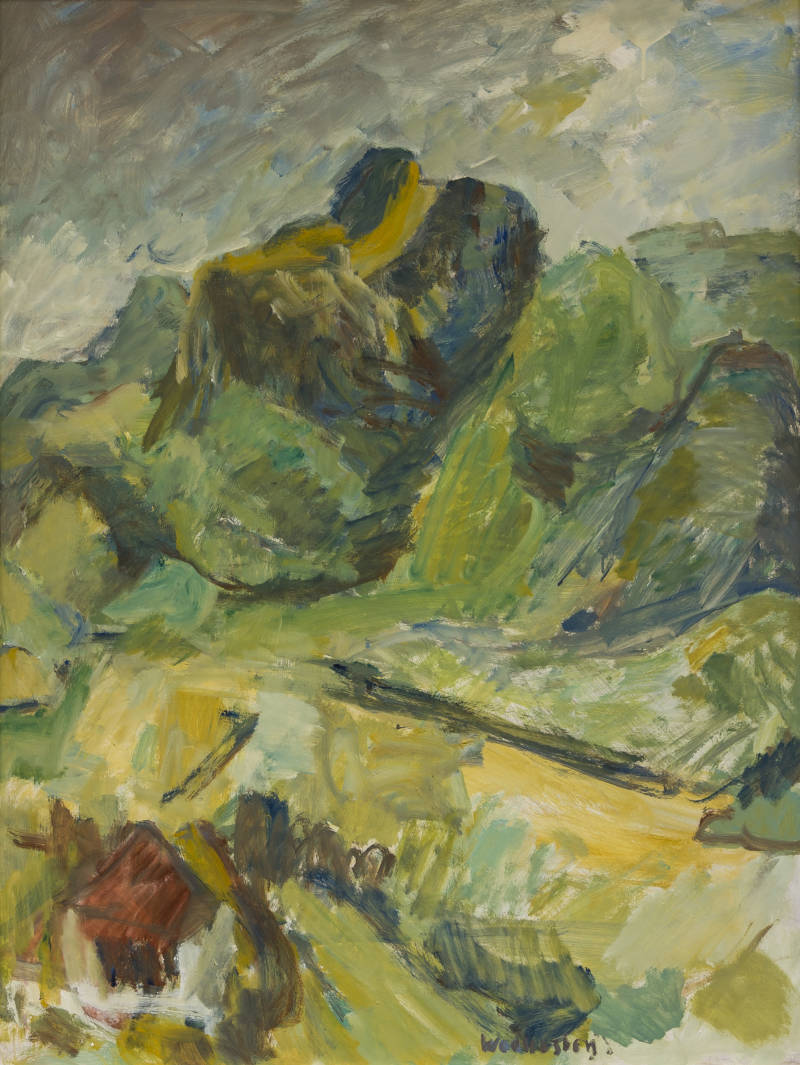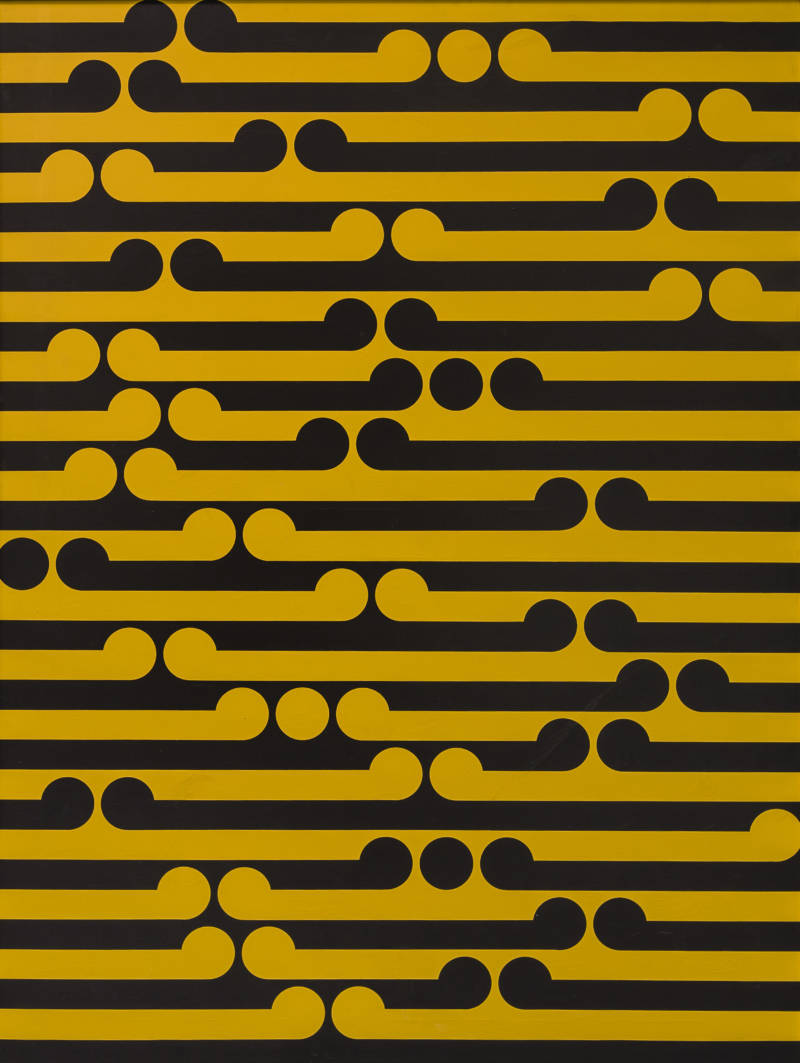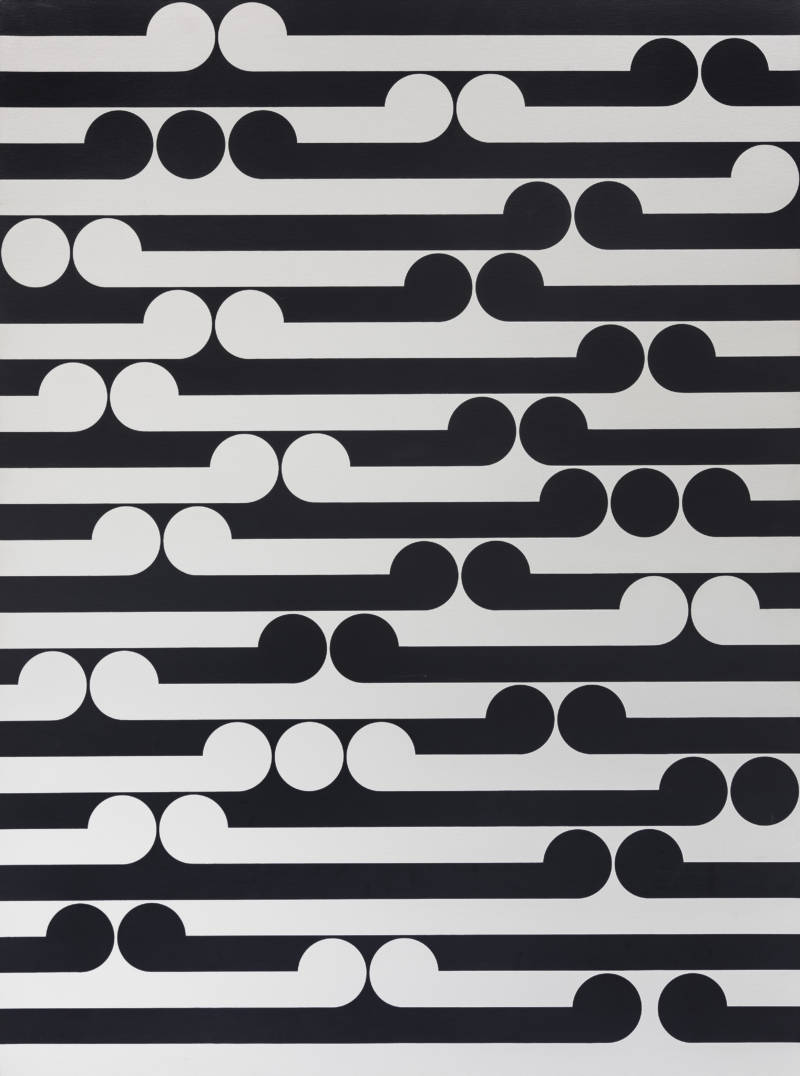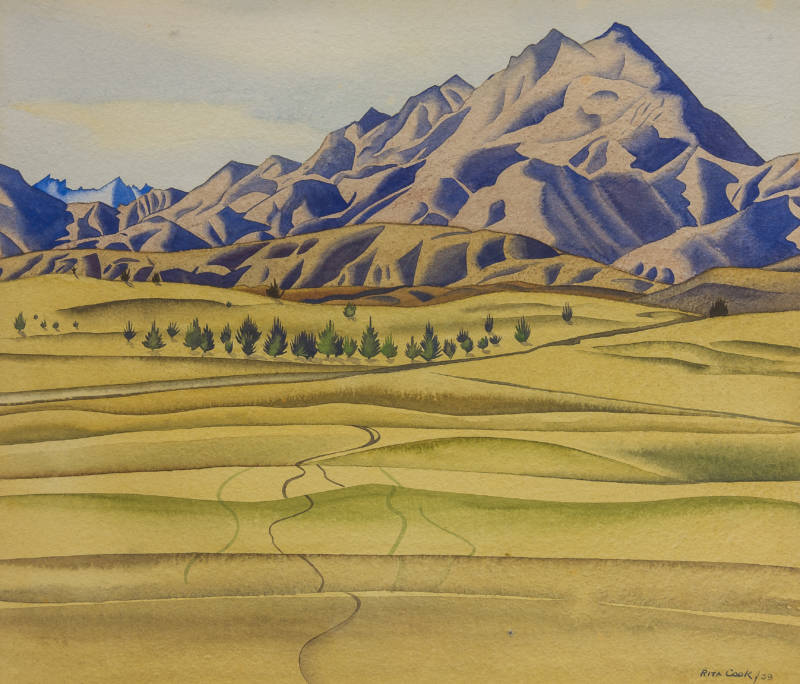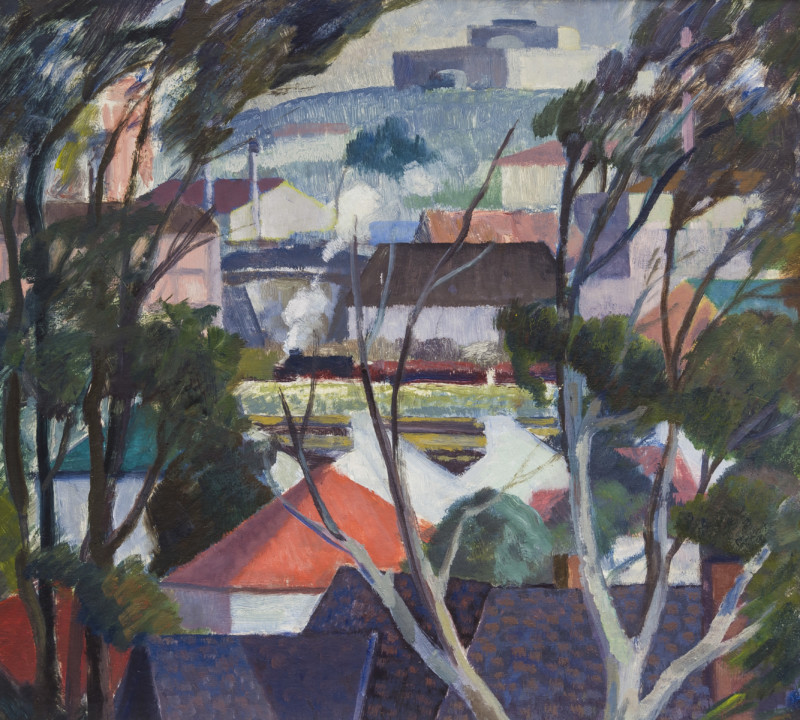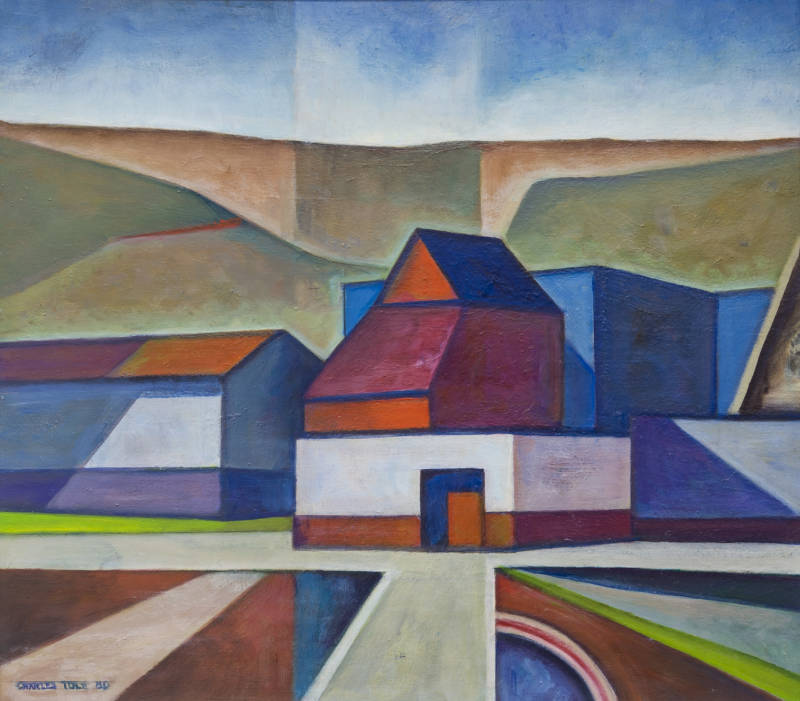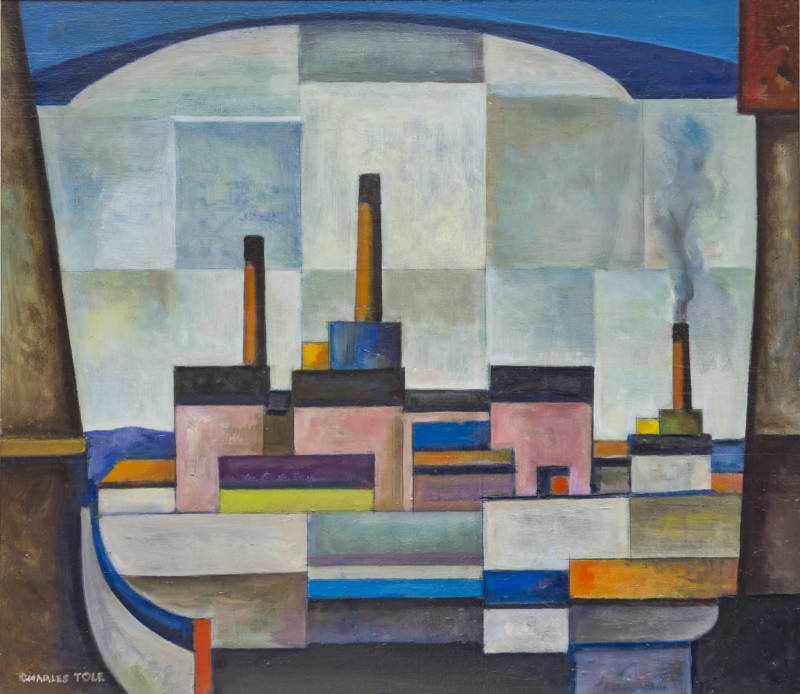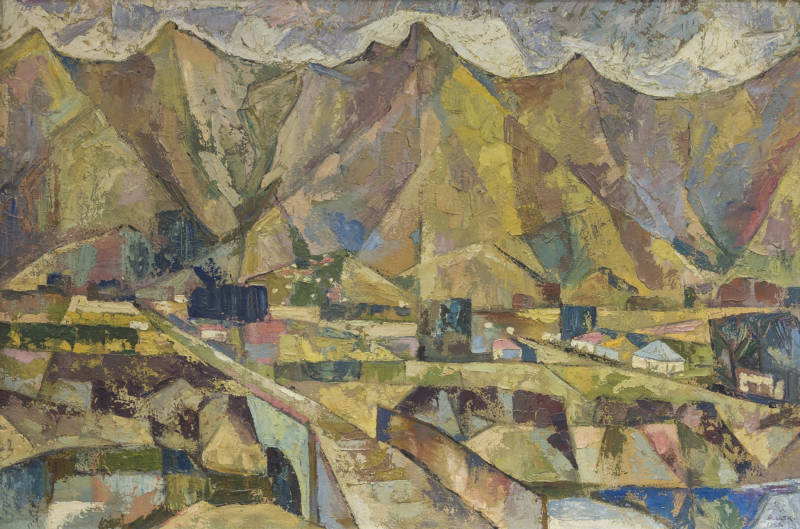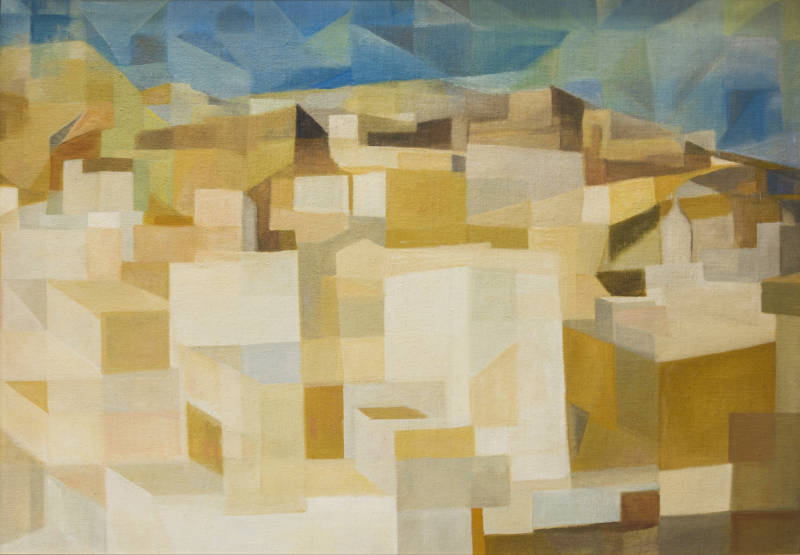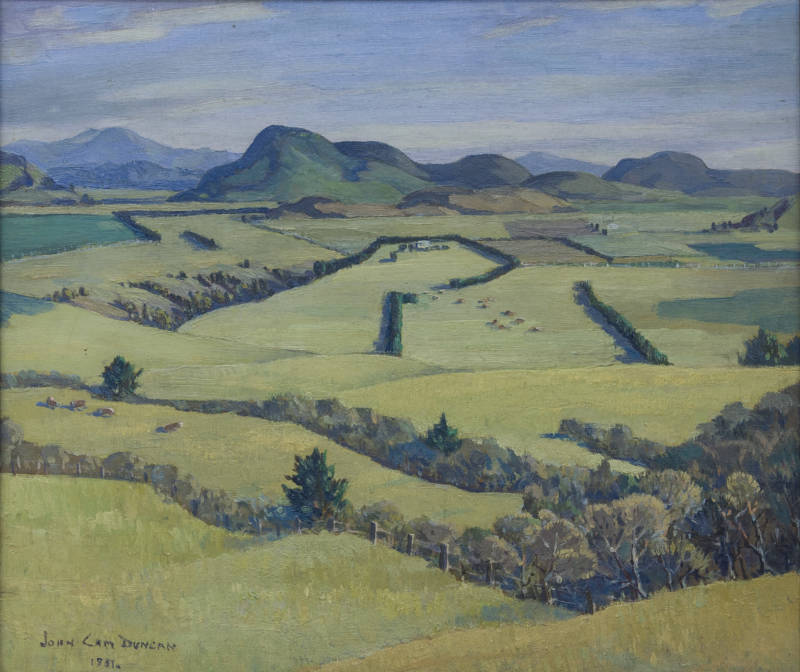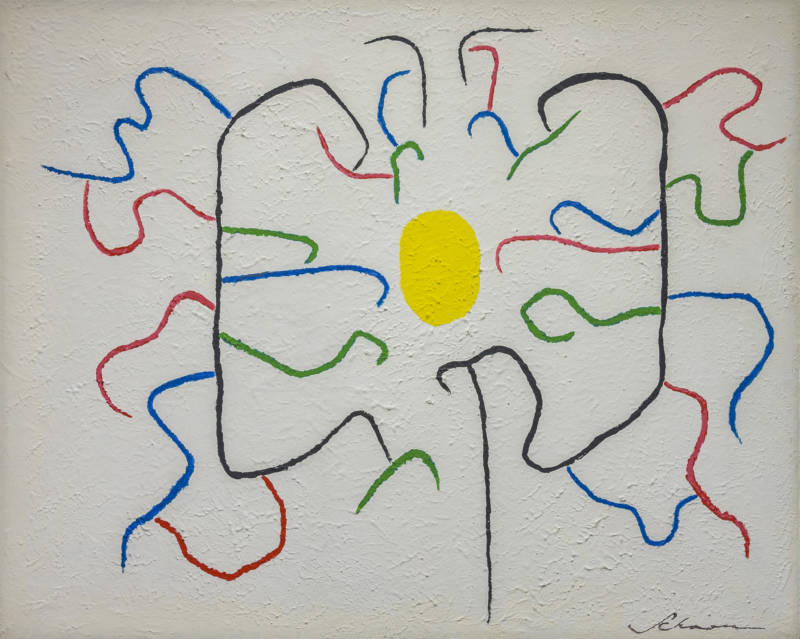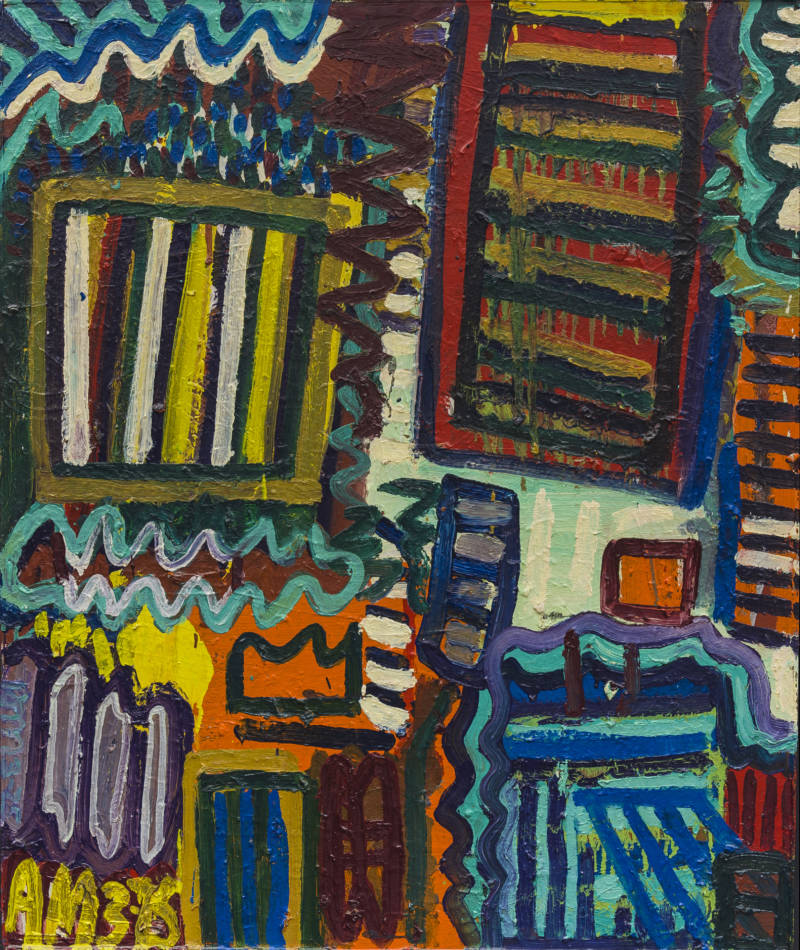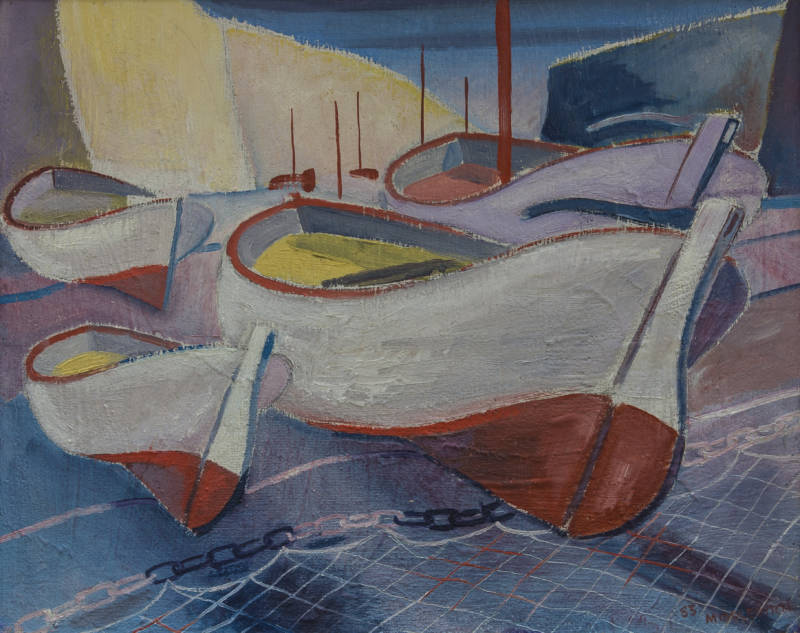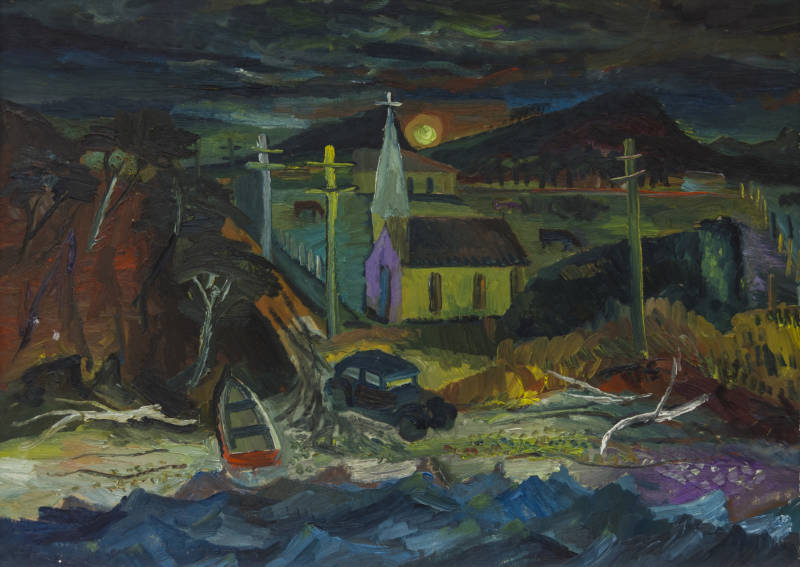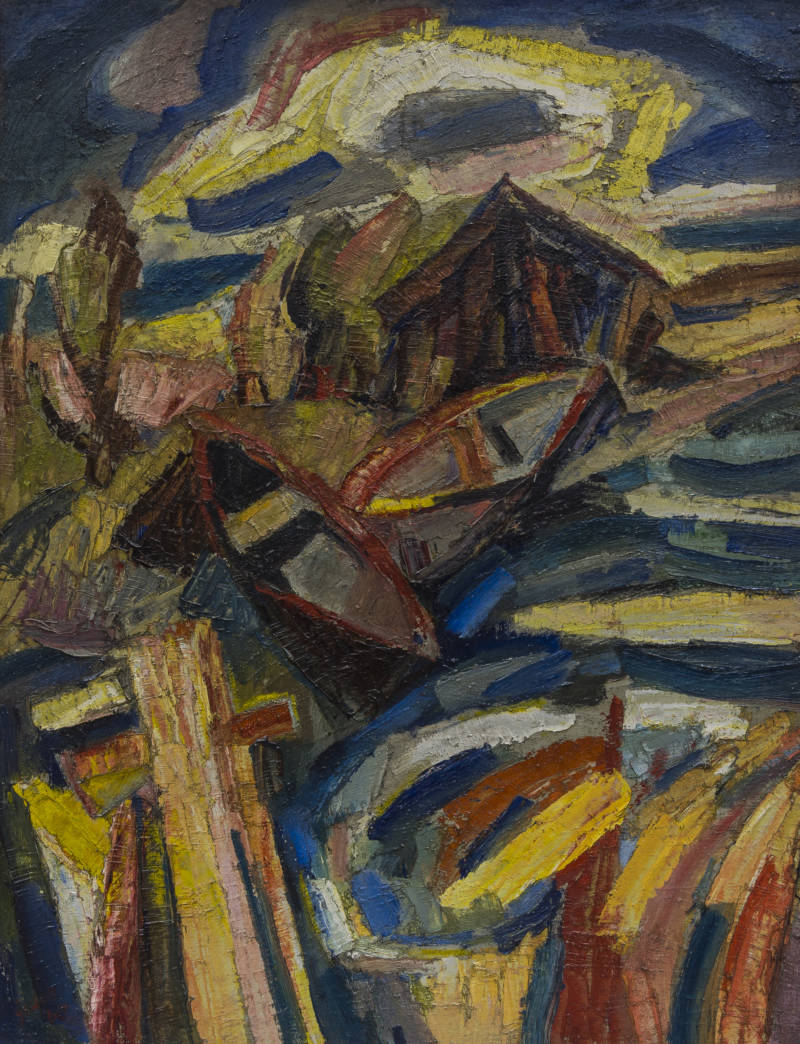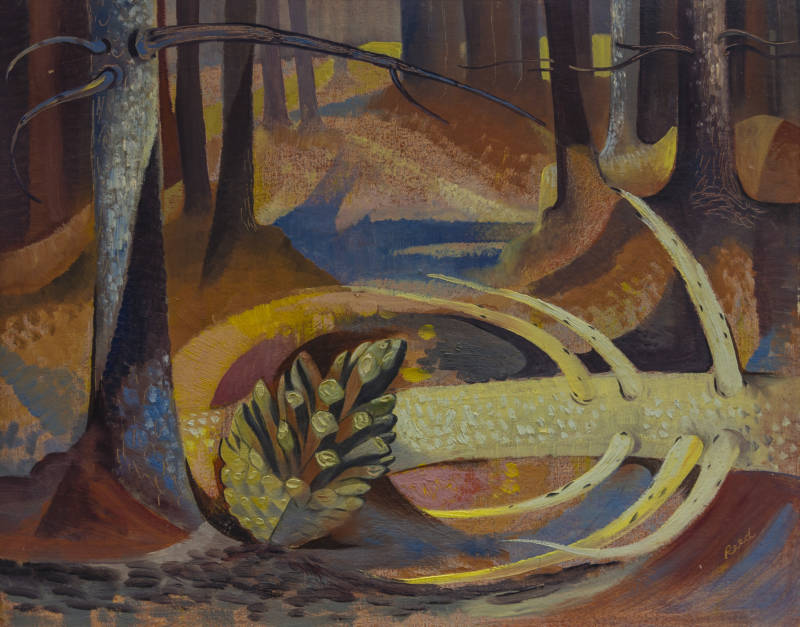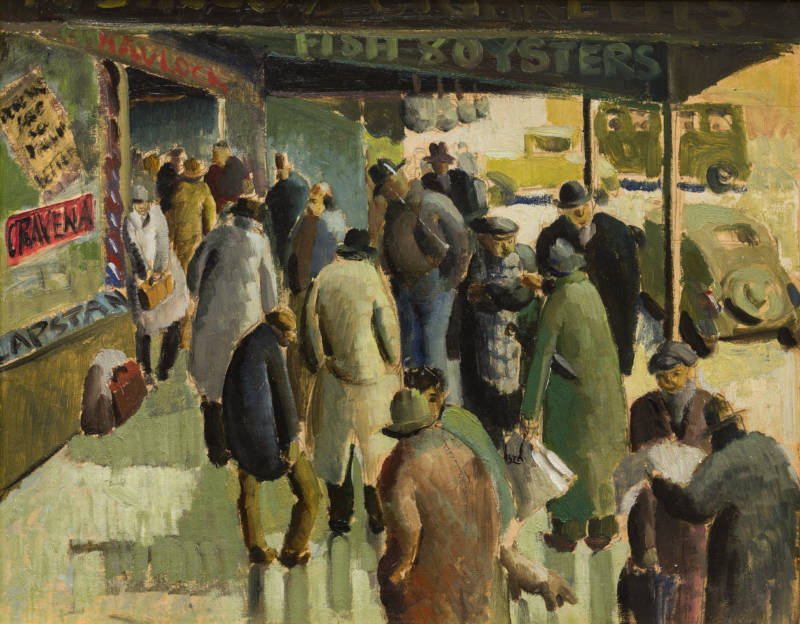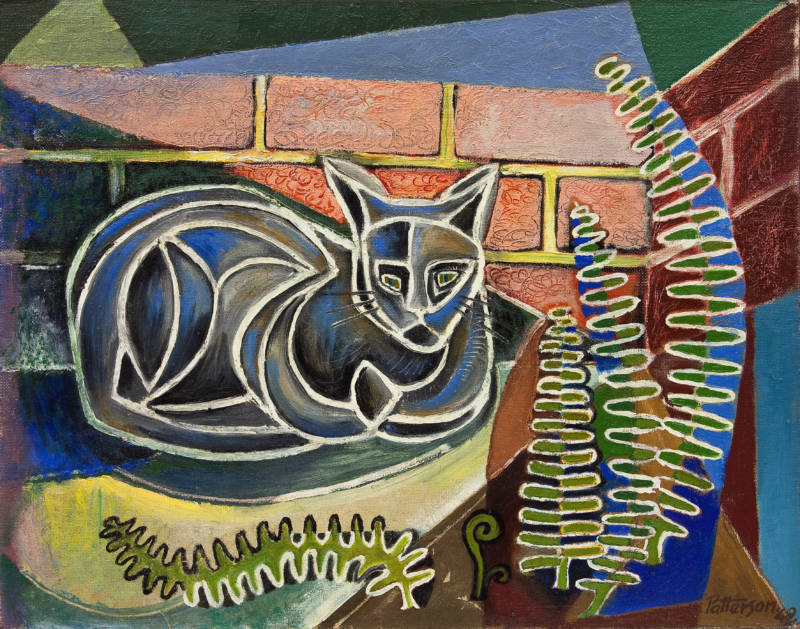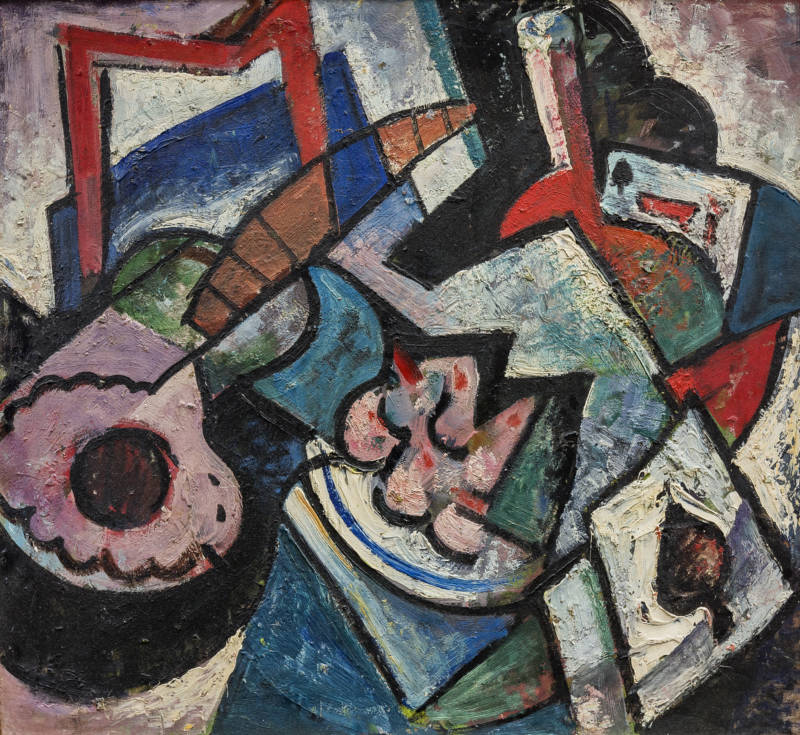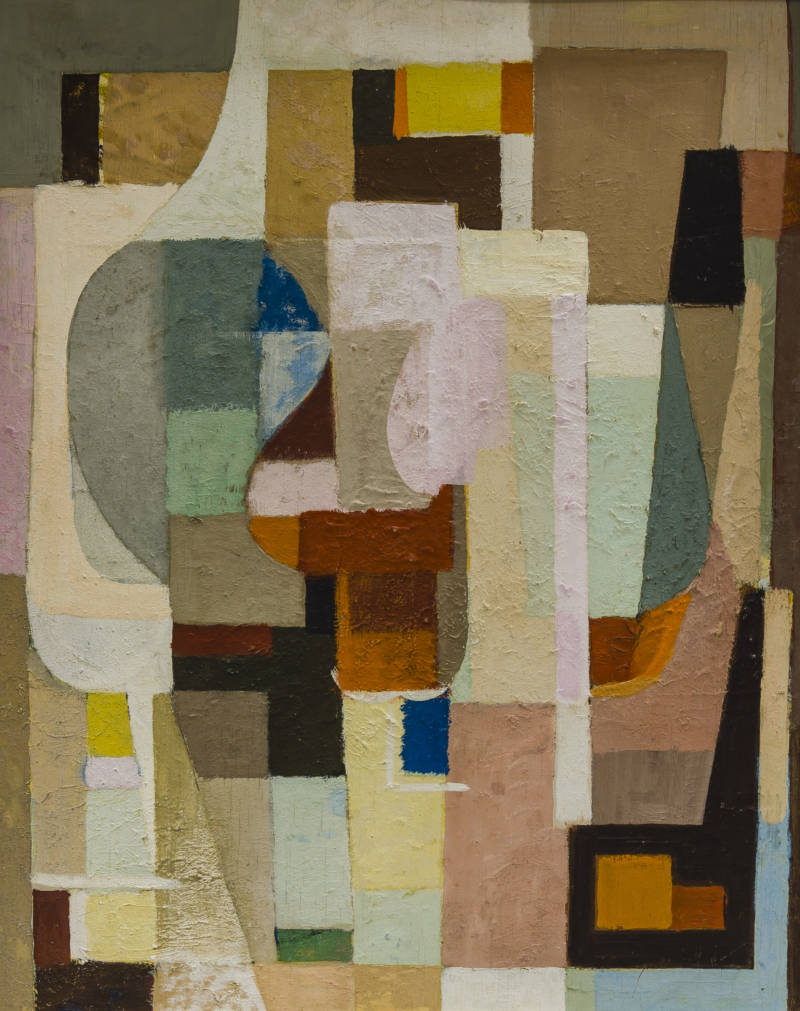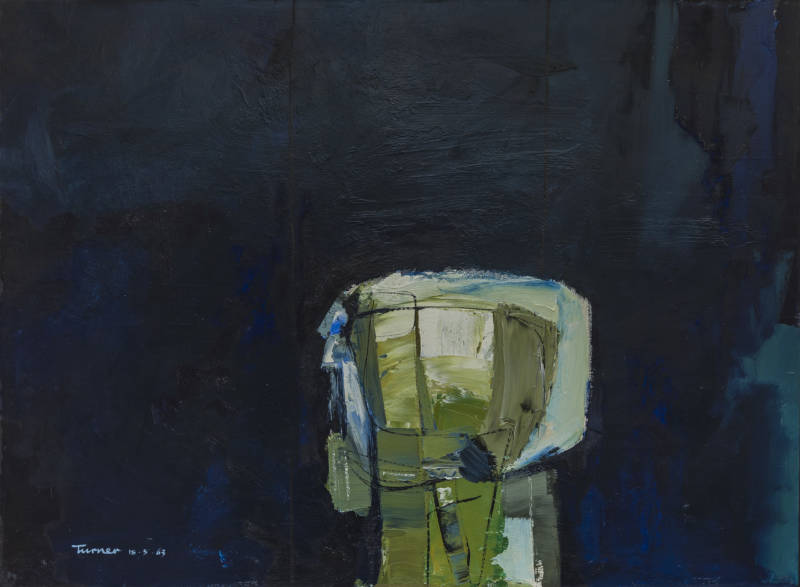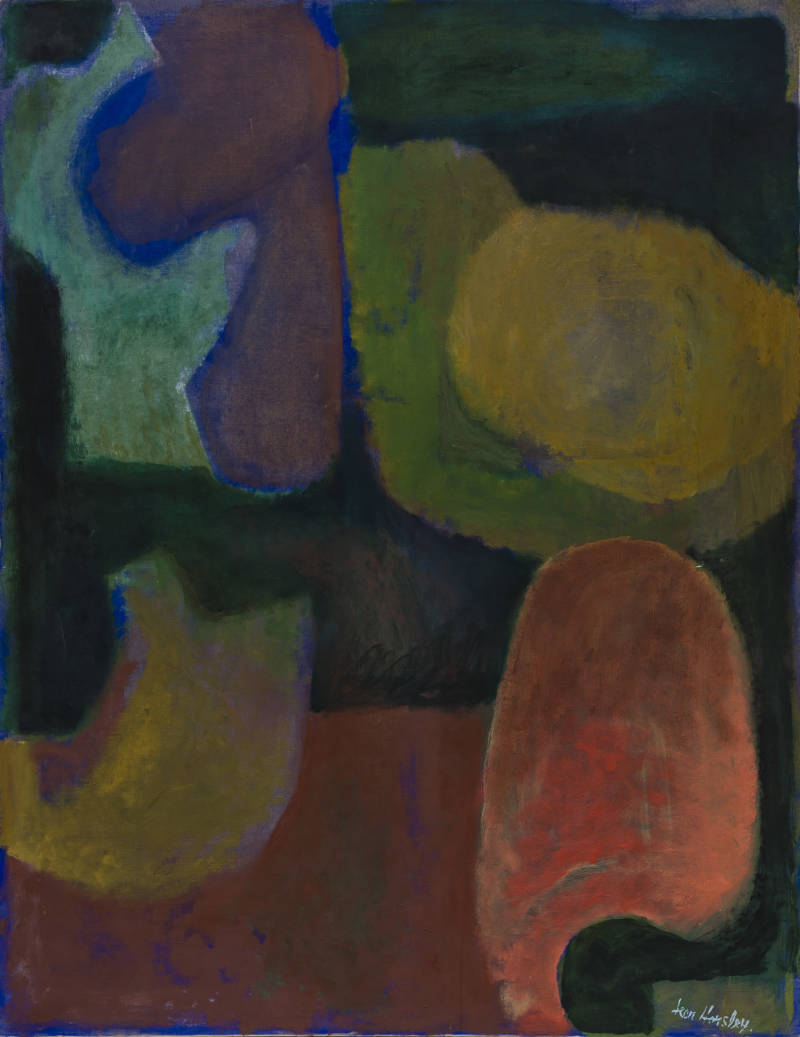
Emerging Modernism
Mid-century artists and ‘fully emerged’ abstract artists moving in the direction of modernism from the 1930s onwards
This exhibition is designed to give more recently arrived Fletcher Building employees an opportunity to experience some of the mid-20th-century treasures held in the Fletcher Trust Collection.
At the heart of the exhibition, in the middle of the tunnel, are paintings by Colin McCahon, Toss Woollaston, Milan Mrkusich, and Gordon Walters. These four artists forged an adventurous path during these years. Their work was often derided as obscure, confused and lacking in an understanding of what many at the time thought to be the ‘true’ New Zealand art—realistic landscape painting. In fact their aims and objects were quite different.
From each end of the tunnel are displayed paintings by their precursors—artists who began to experiment with traditional notions of perspective drawing, geometric forms, soft abstraction, and gestural application of paint.
Increasingly, such artists were concerned more with conveying a personal reality rather than one based on a depiction of what the artist saw in the real world. For them a painting was an artifact in itself, subject to its own rules, rather than being a representation of a subject drawn from nature.
So, John Tole’s 1953 Through the Trees analyses the view of Newmarket up to Auckland Museum, seen through the screen of trees at Highwic, in terms of geometric space. In his 1956 French Bay, a nocturnal painting employing a drastically reduced colour palette, McCahon conveys the idea of reflections on water using narrow horizontal bands. The landscapes of Don Binney are based on sculptural simplifications of landforms, often heavily outlined in black, as in Southern Journey, a painting made in 1964 of a bay at Rakiura Stewart Island.
